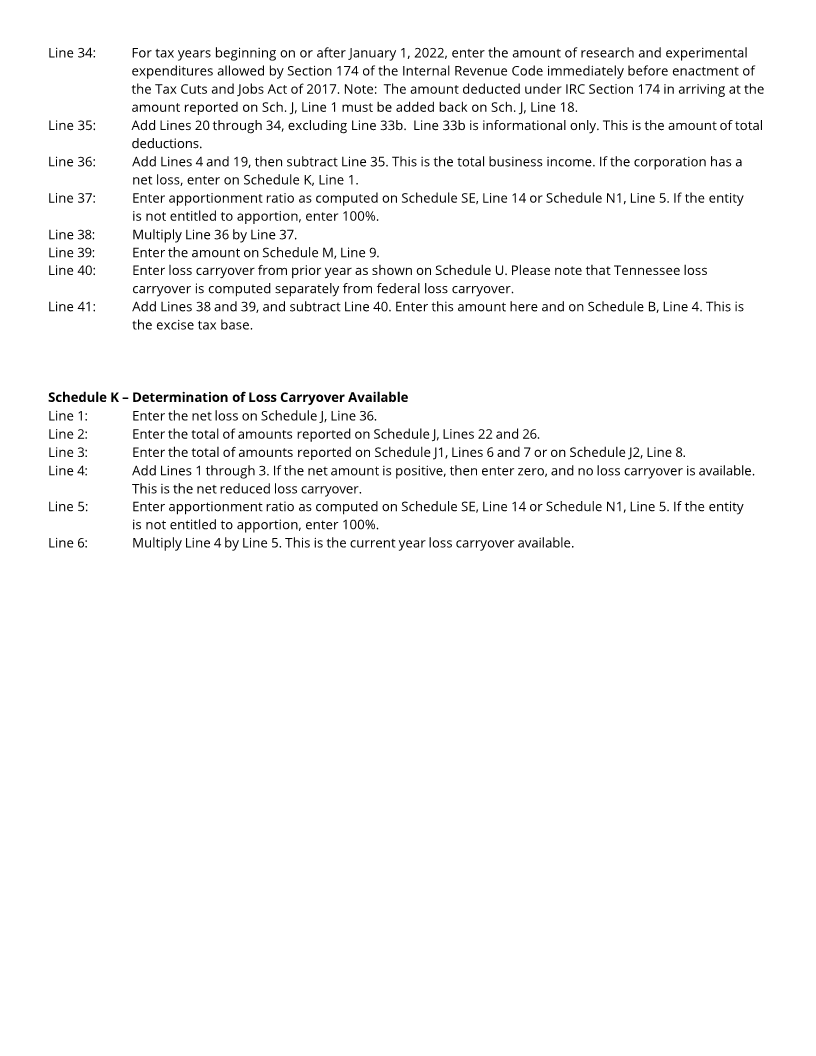
Enlarge image
2023
General Information
Electronic filing and payment is required unless you have received a hardship exemption. Generally, hardship exceptions will
include taxpayers who do not own a computer; taxpayers who do not have access to the internet; and taxpayers whose
religious beliefs prohibit the use of computers and related technology.
The beginning and ending dates of the tax year must be entered. The tax year covered must coincide with the federal return.
A return can cover a 52/53-week filing period, but cannot otherwise exceed 12 months.
Enter the franchise and excise account number. This number may be found by using Tennessee Taxpayer Access
Point (TNTAP) available on the Department’s website at www.tn.gov/revenue.
Enter the FEIN and/or Tennessee Secretary of State Control Number. Also enter the North American Industry Classification
System (NAICS) code.
Check all of the boxes in the top right of the return that apply to the taxpayer.
a) Check the amended return box if the return reflects changes from a previously filed return.
b) Check the final return box if all of the assets of the business have been liquidated and distributed and no further
returns are required to be filed. If the final return box is checked, the Department may request a schedule of
liquidation, distribution, or disposition of all assets and/or Final Return Worksheets (available on the Department’s
website).
c) Check this box if the taxpayer is a captive Real Estate Investment Trust (REIT) that is not owned by a bank, bank
holding company or a public REIT.
d) Check this box to indicate that the Consolidated Net Worth Election Registration Application has been filed. This
election is a group election that is binding for five years.
e) Check this box if the Consolidated Net Worth Election Registration Application was filed during the tax period
with the revoke election box checked. Complete Sch. F1- Non-Consolidated Net worth.
f) The election to use the alternative annualized income installment method of computing the required estimated tax
payments can only be made on an original tax return and must be made annually. See the Estimated Franchise and
Excise Tax Payments Worksheet for additional information and to determine the required quarterly estimates
under this alternative method. The amounts from Line 23 of the worksheet should be reported on Schedule E,
Lines 2(a) through 5(a).
g) Check this box if a federal income tax extension was filed.
h) Captive REITs may elect to use triple weighted sales for franchise tax apportionment purposes, provided that 1. The
election must result in a higher apportionment ratio for the tax year (as compared to the ratio computed using the
standard apportionment formula in effect for the tax year), and 2. the taxpayer must have net earnings, rather than a net
loss, for the tax year. Captive REITs who do not meet these two criteria cannot make this election.
Date Tennessee operations began should be completed if this is the initial return. Taxpayers incorporated or otherwise
formed in Tennessee must prorate the franchise tax on the initial return from the date formed or the date Tennessee
operations began, whichever occurred first. Taxpayers incorporated or otherwise formed outside Tennessee must prorate
the franchise tax on the initial return from the date Tennessee operations began.
A taxable entity that is incorporated, domesticated, qualified or otherwise registered to do business in Tennessee that was
inactive in Tennessee for the entire taxable period and owes only the minimum tax may file only page 1 of this return and omit
the remaining pages.













